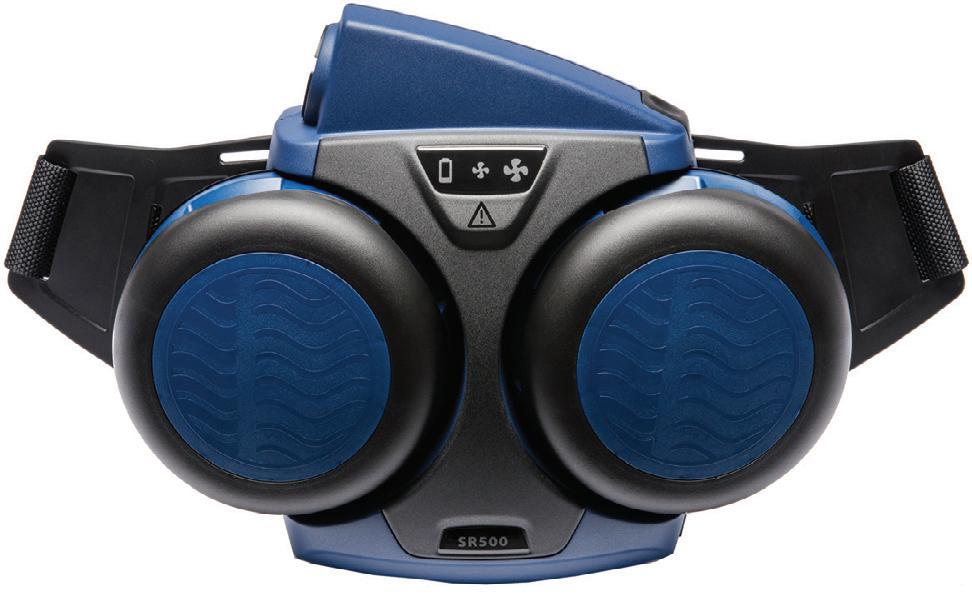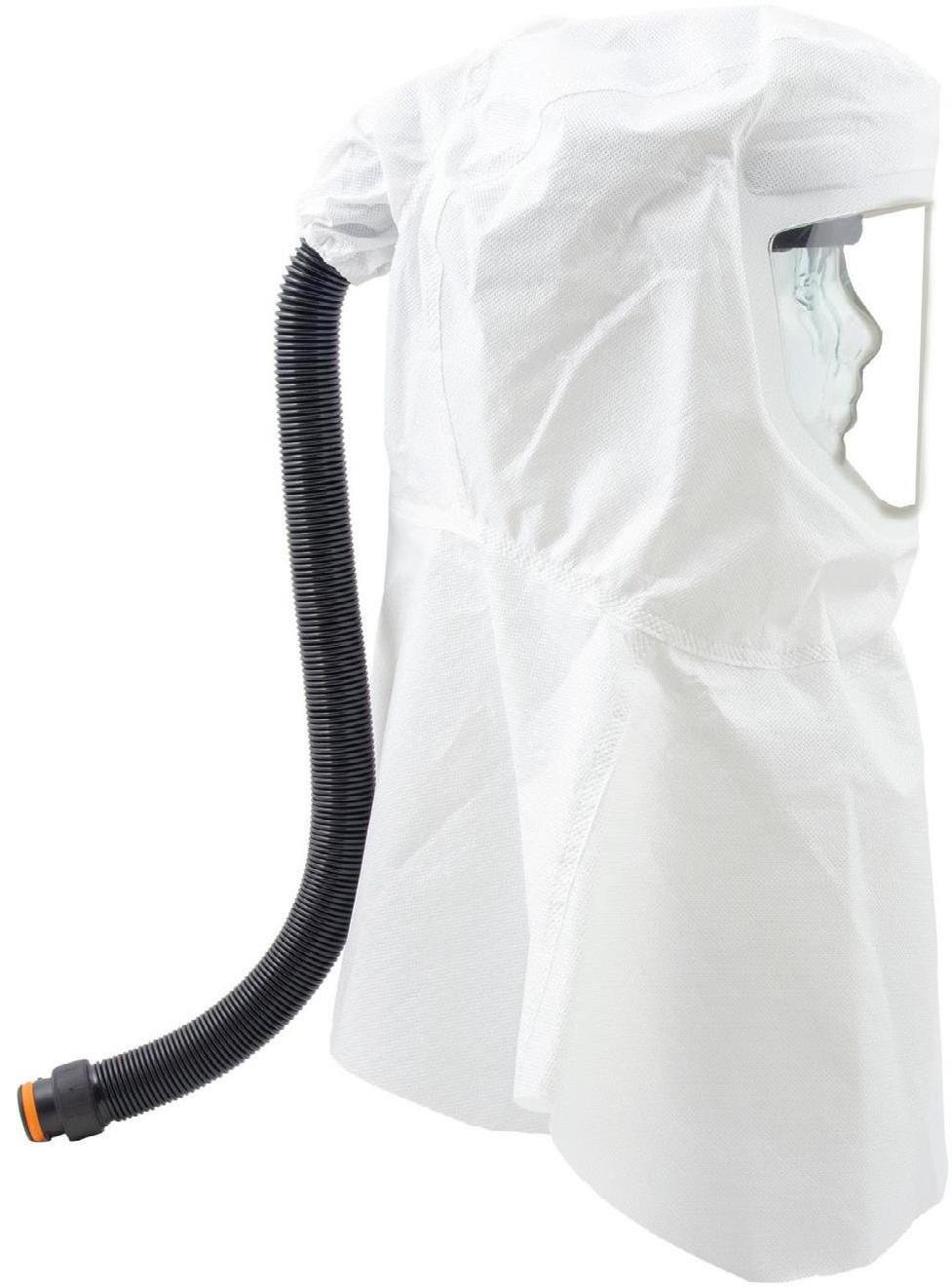
9 minute read
Meeting the conditions features that make mining boots fit for purpose
MEETING THE CONDITIONS
FEATURES THAT MAKE MINING BOOTS FIT FOR PURPOSE
Adrian Blandford, Global Work & Safety Range Manager, Blundstone

Apair of work boots is simply not fit for purpose unless safe and comfortable. Often designed for specific conditions, safety boots are built around features that keep feet secure — in all kinds of environments, while still being comfortable and supportive. The challenge for safety footwear is to fulfil a range of roles and functions simultaneously while ensuring it is fit for purpose. Accident prevention is fundamentally important, but it is supplemented by increased awareness of long-term occupational health issues. The advent of longer shifts, changing work practices, varied environments, and the implications of an ageing and gender-diverse workforce are all factors that need to be considered when designing safety footwear for the mining industry.
The choice of safety footwear is a subjective one, involving a range of practical and emotional considerations. Perhaps more than any other item of apparel, footwear has a strong bearing on the comfort and wellbeing of the wearer. Deficiencies in this area can be detrimental to the wearer’s physical and mental health, and their performance in their work. To ensure adequate protection for miners, it is the responsibility of both the employer and employee to ensure that the correct personal protective equipment is worn. The suitability of safety footwear to provide adequate protection is accepted by occupational health and safety professionals and consumers alike, as being defined by written standards, with the Australian Standard being AS 2210.3:2019.
Standard
National and international standards address specific aspects of the use of safety footwear and encompass a range of specialised fitfor-purpose applications. The testing for standard AS 2210.3:2019 compliance covers many facets of the footwear construction, including design, upper construction (including leather properties), linings, durability and slip resistance of outsole materials, insoles, toe protection and specific ergonomic features. Certain workplace environments require additional protective features in footwear, including penetration resistance, electrical properties, water resistance and metatarsal protection — requirements that are also addressed in additional clauses in the above standard.
Features
Mining boots require a number of features to provide adequate protection and need to be able to withstand the harsh conditions of mine sites. These features include slip resistance, tread pattern, shanks and steel top caps. Rubber outsoles should offer heat resistance and provide slip resistance in varied environments, including resistance to cuts, abrasion and microbial attack, and be oil, acid and organic fat resistant. To enhance underfoot stability in muddy, rugged and outdoor conditions, boots should have a heavy-duty tread pattern. The tread pattern should be designed to promote natural dislodgement of small rocks and dirt. Another key feature of a mining boot is the shank, which ensures correct flex point and torsional stability. Steel toe caps for boots are essential for the mining industry as they provide maximum protection against impact, cuts, penetration and rolling forces, such as heavy moving machinery. Most importantly, boots must be breathable and comfortable, as miners spend extended hours on their feet, often on uneven and unstable surfaces.
Some other boot components that provide extra protection for miners include penetration-resistant insoles, metatarsal protection and Kevlar stitching. Penetration-resistant insoles provide maximum resistance against penetration of objects through the soles of the footwear. Fractures of the metatarsal bones are one of the most common traumatic foot injuries, so it is important to have a metatarsal guard for boots to reduce the risk of injury. Additionally, Kevlar stitching reduces the risk of abrasion along seams in such harsh environments. The best way to satisfy workers who have to wear protective footwear every day is to create truly fit-for-purpose products that are comfortable, tailored to performance and easy to wear; provide the protection they need; and are as unobtrusive as possible.
CASE
STUDY Hi-vis maternity range advocates industrial inclusion
A collaboration between BHP, Blackwoods and Co Gear has led to the redesign of women’s high-visibility maternity wear, at a time when industrial and trade businesses across Australia are striving to increase the number of women taking on industrial and trade roles across a range of industries. Co Gear Founder and Director Kym O’Leary said industries have been discussing inclusion and diversity initiatives in their workplaces, but the needle has been slow to move, despite a growing number of women in industrial and trade roles within these industries. “There is a growing number of women looking to pivot away from roles in metro areas and take on industrial and trade roles with some of the biggest mining and construction companies in Australia,” O’Leary said. “But they are holding themselves back because things like workwear are not always suited for women.”
Many women requiring high-visibility workwear that is compliant, durable, functional and correctly fitted have a limited number of options to select from — and for expecting mothers, the choices are even fewer. “While some businesses may not see the introduction of workwear for women as a significant change, it is actually an immediate and tangible output that can demonstrate commitment to progress. [B]usinesses need to go beyond creating committees and implementing policies, assuming the job is done. They need to make broader strides and take immediate action where they can, even if it is bucking the one-size-fits-all mentality around workwear,” O’Leary said.
Mother-to-be and North Queensland fly-in fly-out worker Rejoice Jacobs said more mining and construction companies should offer maternity wear on their workwear lists. “Having workwear designed to accommodate for the changes you go through during pregnancy is great,” Jacobs said. “After all, it’s not only a woman’s belly that grows during pregnancy. It’s so nice having a comfortable option that will take me through my whole pregnancy, without needing to order larger sizes every few months. I think having this as an option for more women will help them to feel more included at work.” O’Leary said the real-world application of the Co Gear range was a key factor to perfecting the final designs.
The maternity workwear designs were subject to considerable research and development testing across the Bowen Basin and Pilbara mining regions, to ensure they stood up to the practical challenges faced by women onsite. “When we started working on the redesigns for our range of women’s workwear, we knew that collaboration was going to be a major contributor to our success, and fortunately we had plenty of support from industry leaders such as BHP and Blackwoods,” O’Leary said. Based in Toowoomba, Queensland, Co Gear is collaborating with industry leaders to design a range of high-quality workwear that is comfortable and practical for women working across different industrial and trade sectors. “The feedback we received from women across varying roles in often challenging conditions was very positive,” O’Leary said, “and further highlighted the need for businesses to re-evaluate the workwear options they are offering staff.” Co Gear www.cogear.com.au

©Co Gear

CASE
STUDY Hydraulics-focused training academy boosts distributor safety
Westwick-Farrow Media A.B.N. 22 152 305 336
www.wfmedia.com.au
Head Office: Unit 7, 6–8 Byfield Street, (Locked Bag 2226) North Ryde BC NSW 1670, AUSTRALIA Ph: +61 2 9168 2500
Hydraulink Academy training in Central Queensland. Hydraulink trainer Gary Howes (front left) with participants from distributors Hose Corp and Nebo Motors.

A nationally recognised training program run by the Hydraulink Academy is bolstering the safety qualifications of two Queensland distributors, Hose Corp and Nebo Motors. The distributors attended the training sessions because many of their customers requested this level of nationally recognised safety and environmental training. The Hydraulink Academy offers a range of hydraulics-focused training programs, including a number of nationally recognised units. The programs — which can be tailored to suit particular requirements — are run by qualified trainers either onsite at a customer facility or at a dedicated Hydraulink venue in Australia or New Zealand. The Queensland training session was conducted by qualified Hydraulink trainer Gary Howes, who has decades of experience working with hydraulics.
Howes travelled to two sites convenient to both distributors, and found COVIDSafe venues with adequate space to perform the theory and practical elements of the course. “Safety is front of mind for the customers of these distributors,” Howes said. “In the areas they serve, there are some major coal companies that wouldn’t even consider a supplier’s business without the assurance of nationally recognised training, such as the type provided by the Hydraulink Academy.” The course focused on areas such as hose assemblies, isolation, manual tools, silver soldering, work health and safety, customer service and communications. The programs aim to provide a well-rounded course that prepares participants for real-world situations and equips participants with the safety, environmental and quality experience to deliver superior results for their customers.
The training sessions apply to customers and staff of Hydraulink’s 400 service points across Australia, New Zealand and the Pacific Islands, as well as customers, distributors, original equipment manufacturers and end users. Hose Corp and Nebo Motors serve a range of industries in Central Queensland, with Hose Corp focusing on general industry, sugar cane and coalmining while Nebo Motors focuses on transport, heavy vehicle and diesel mechanic works, with some overlap into mining. “Hydraulink’s dedication to quality, safety and service extends not just throughout the entire organisation, but into its distributors too, where a safety-first culture is instilled throughout the partnership with these valued members of our national network,” Howes said. Hydraulink www.hydraulink.com.au
Editor: Dr Joseph Brennan ss@wfmedia.com.au
Editorial Assistant: Ashna Mehta
Publishing Director: Geoff Hird
Art Director/Production Manager: Julie Wright
Art/Production: Colleen Sam, Veronica King
Circulation: Dianna Alberry, Sue Lavery circulation@wfmedia.com.au
Copy Control: Mitchie Mullins copy@wfmedia.com.au
National Group Sales Manager: Nicola Fender-Fox Ph: 0414 703 780 nfender-fox@wfmedia.com.au
If you have any queries regarding our privacy policy please email privacy@wfmedia.com.au
Subscriptions: For unregistered readers - price on application
ISSN 1447-8277 PP 100007391
Printed and bound by Bluestar
All material published in this magazine is published in good faith and every care is taken to accurately relay information provided to us. Readers are advised by the publishers to ensure that all necessary safety devices and precautions are installed and safe working procedures adopted before the use of any equipment found or purchased through the information we provide. Further, all performance criteria was provided by the representative company concerned and any dispute should be referred to them. Information indicating that products are made in Australia or New Zealand is supplied by the source company. Westwick-Farrow Pty Ltd does not quantify the amount of local content or the accuracy of the statement made by the source.














